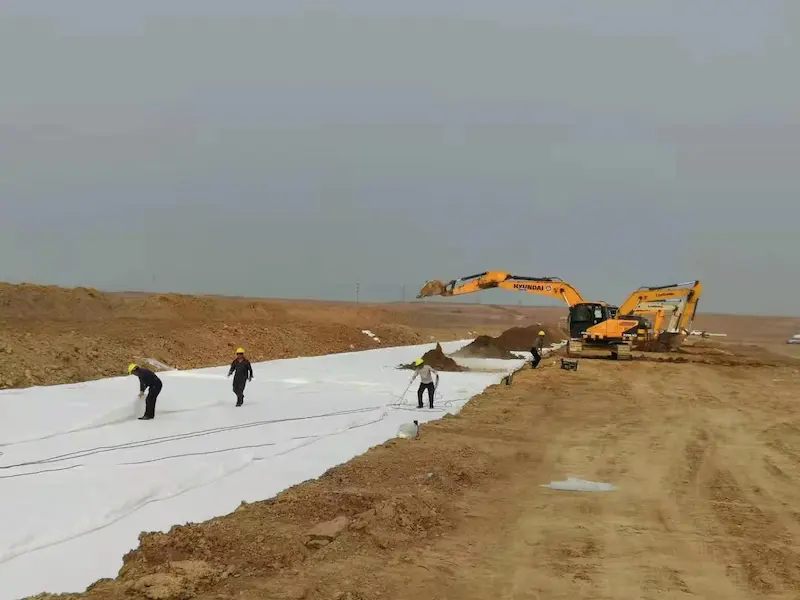Geosynthetics 3D Composite Drainage Net for Landfill Leachate and Railway Drainage
Haoyang Environmental Co., Ltd. (Haoyang) is a trusted leader in geosynthetics and environmental engineering solutions. Our 3D Composite Drainage Net is an advanced drainage material designed for effective filtration, drainage, and protection in challenging environments. Its unique three-dimensional structure, coupled with double-sided adhesive geotextile fabric, ensures superior performance for landfill leachate and railway drainage applications, providing a sustainable and reliable solution for environmental and infrastructure projects.
3D Composite Drainage Geonet
3D composite drainage geonet is made of a unique three-dimensional geotextile with double-sided adhesive nonwoven geotextile fabric, which usually has the anti-filtering properties. It can replace traditional layers of sand and gravel, mainly used for drainage in landfill sites, roadbeds, and tunnel walls.
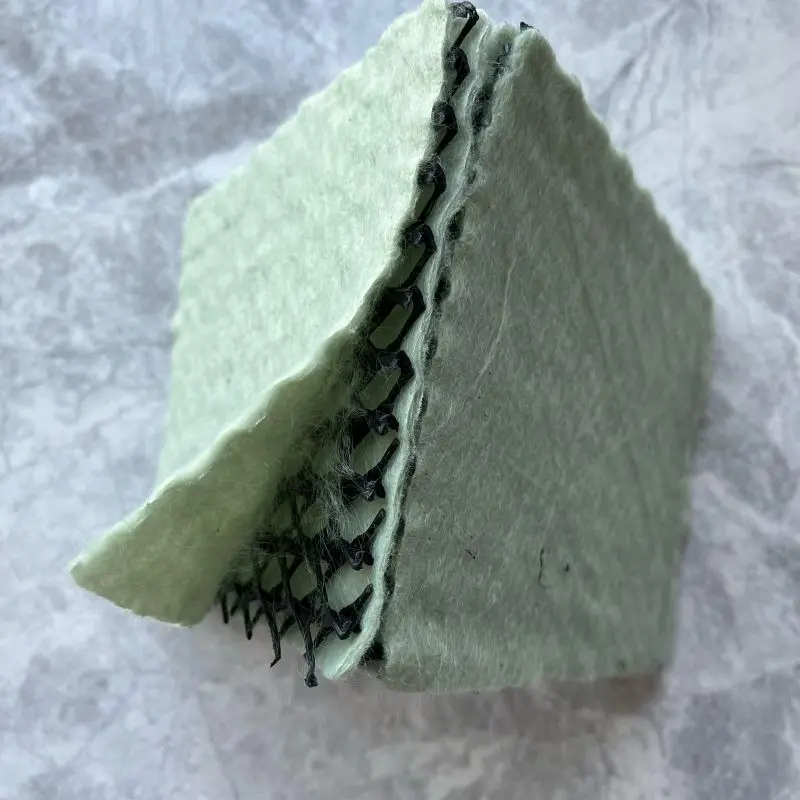
Specifications
| Item | Specification | |
| Geonet | Composite drainage net | |
| Density(g/cm³) | ≥0.939 | |
| Carbon black content% | 2~3 | |
| Longitudinal tensile strength(kN/m) | ≥8.0 | ≥16.0 |
| longitudinal hydraulic conductivity(m²/s) | ≥3.0×10-3 | ≥3.0×10-3 |
| Peel strength(kN/m) | ≥0.17 | |
| mass per unit area of geotextile(g/m²) | ≥200 | |
Performance Characteristics
The unique three-dimensional structure of the core of the three-dimensional composite drainage geonet allows it to withstand high compression loads throughout its entire use, maintaining a consistent thickness and significantly improving water conductivity.
1, Strong drainage capacity, able to withstand prolonged high-pressure loads.
2, Extremely high tensile and shear strength.
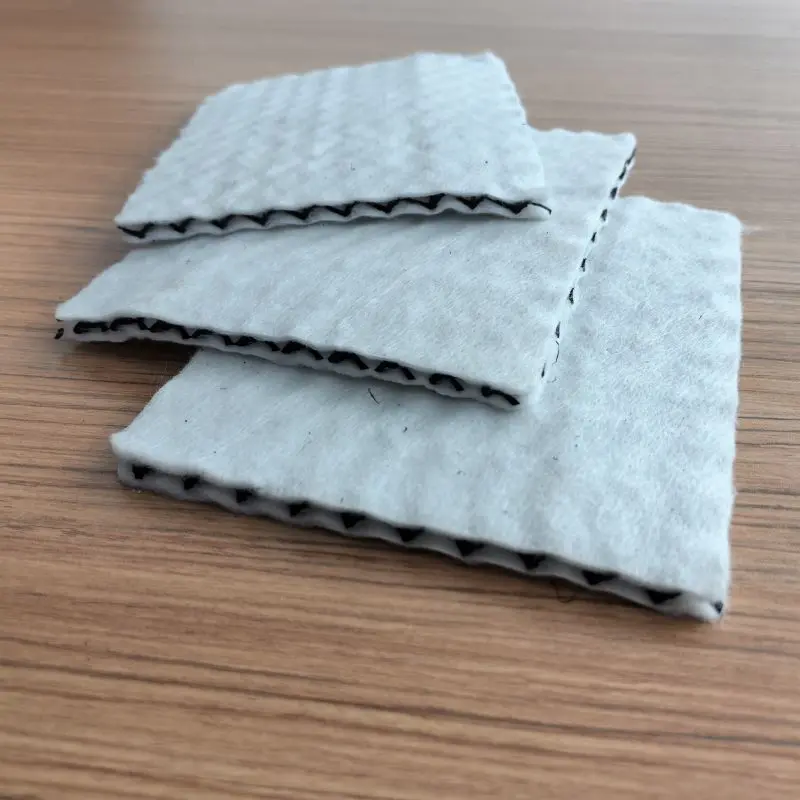
3, Reduces the probability of geotextile embedding into the geonet core, maintaining a stable long-term water conductivity.
4, The three-dimensional composite drainage geonet can withstand compressive loads greater than 2000 kPa.
5, Far surpasses the compressive strength of ordinary drainage nets.
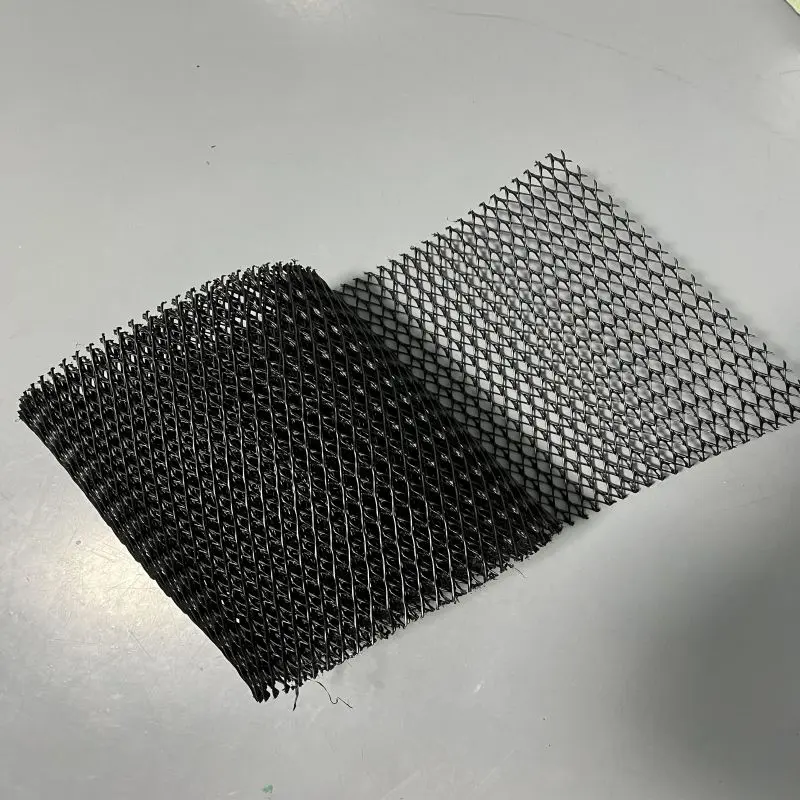
For Landfill Leachate
In traditional, natural drainage materials such as sand and gravel were often used for the collection and drainage of leachate in landfill sites. The problems are :
1, Occupies a large amount of landfill space
2, For the drainage of leachate on slopes, it will be difficult to stack using sand and gravel.
3, Using gravel as a leachate collection and drainage layer can cause damage to the impermeable geomembrane.
Using geosynthetic composite drainage net can solve all the above problems. The three-dimensional geosynthetic composite drainage net features a three-dimensional spatial drainage structure, incorporating a high-permeability geotextile composite. It can maintain long-term drainage performance even under extremely high loads and is used as the primary leachate collection and drainage layer (LCRS). It can promptly discharge the leachate from the impermeable membrane.
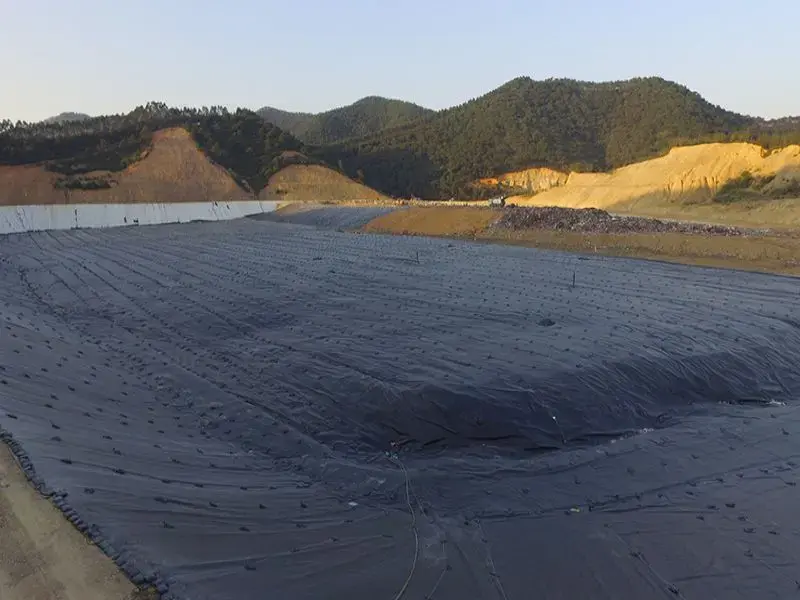
For Railway Drainage
1, Installed between the subgrade and base course, it is used to drain water accumulated between the subgrade and base, block capillary water, and effectively integrate into the edge drainage system. This structure automatically shortens the drainage path of the subgrade, significantly reducing drainage time. It can also reduce the quantity of selected subgrade materials (i.e., materials with more fines and lower permeability) and extend the lifespan of the road.
2, Installing drainage nets in the base course can prevent fine materials from entering the subgrade (acting as a barrier). Aggregate base materials will to some extent enter the upper part of the geonet. In this way, the composite geosynthetic drainage net has a potential role in limiting lateral movement of the aggregate base course, similar to the reinforcement effect of geogrids. Generally, the tensile strength and rigidity of composite geosynthetic drainage nets are superior to many geogrids used for subgrade reinforcement. This limiting effect will enhance the subgrade's bearing capacity.
3, After road aging and crack formation, most rainwater will enter the cross-section. In this case, by directly laying the drainage net below the road surface instead of a drainable subgrade, the drainage net can collect moisture before it enters the subgrade/base course. It can also be advantageous to wrap a membrane around the bottom of the drainage net to further prevent moisture from entering the subgrade. For rigid pavement systems, this structure allows for the design of roads with a higher drainage coefficient (Cd). Another advantage of this structure is that it may allow for more uniform hydration of concrete (studies on the extent of this advantage are ongoing). Regardless of whether it is a rigid or flexible pavement system, this structure can extend the life of the road.
4, In northern cold climate conditions, laying drainage nets can help mitigate the impact of frost heave. If the freezing depth is substantial, the geotextile can be laid in a shallower position in the base course to block capillary action. Additionally, it is often necessary to replace the easily frost-heaved granular base layer, extending downward to the freezing depth. The frost-susceptible backfill can be directly filled on top of the drainage net, up to the subgrade surface. In this case, the system can be connected to a drainage outlet, maintaining the groundwater level at or below this depth. This can potentially limit the development of ice crystals, allowing for unrestricted traffic loads during spring thaw in cold regions.
226417.webp)
Manufacturing Process
The process includes the following steps.
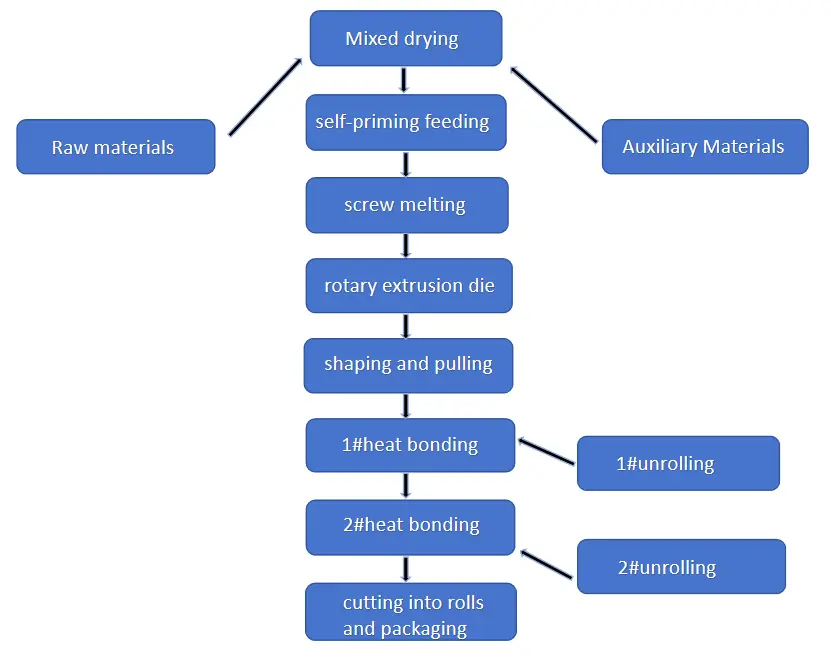
Production Line Display
Using polyethylene resin as raw material, undergoes melting extrusion through a screw extruder, and employs a rotating die to produce a drainage core with a three-dimensional drainage structure. Subsequently, an online thermal composite unit is utilized to combine geotextile and the drainage core, creating a three-dimensional composite drainage net. The device is capable of producing a net core thickness ranging from 5 to 8 mm, with a maximum width of 6 meters, and boasts a production capacity of 2000 tons per year.
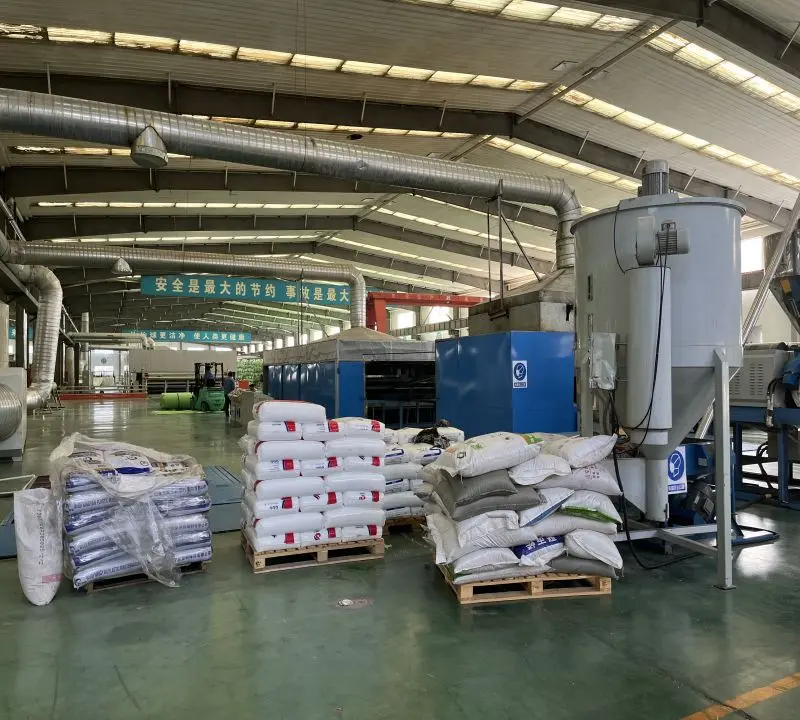
Advanced Features of the Equipment
1, Adoption of a novel and efficient screw, ensuring uniform material plasticization and high production yield.
2, Utilization of a new type of rotating die, stabilizing the three-dimensional structure of the net core and enhancing drainage performance.
3, Incorporation of an innovative online thermal composite unit, resulting in a high peel strength for the composite drainage net.
4. Certification: Three-dimensional Net Composite Device (Patent Certificate)
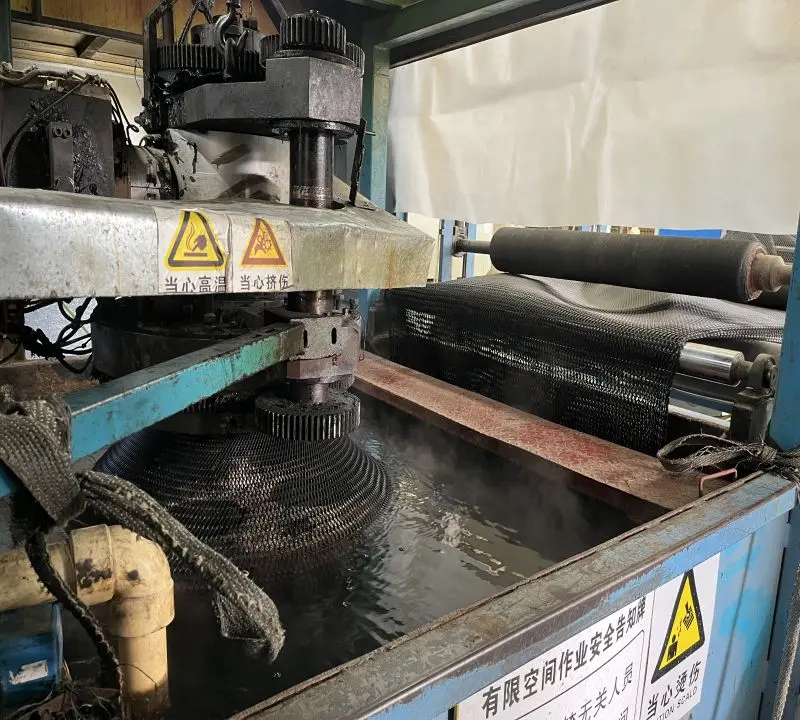
Haoyang Environmental’s 3D composite drainage net offers superior performance for landfill leachate and railway drainage applications. Featuring a high-density polyethylene core and double-sided geotextile fabric, it ensures efficient filtration, drainage, and protection. Designed for durability, it resists chemicals, UV, and heavy loads, providing sustainable and reliable solutions for environmental and infrastructure projects.
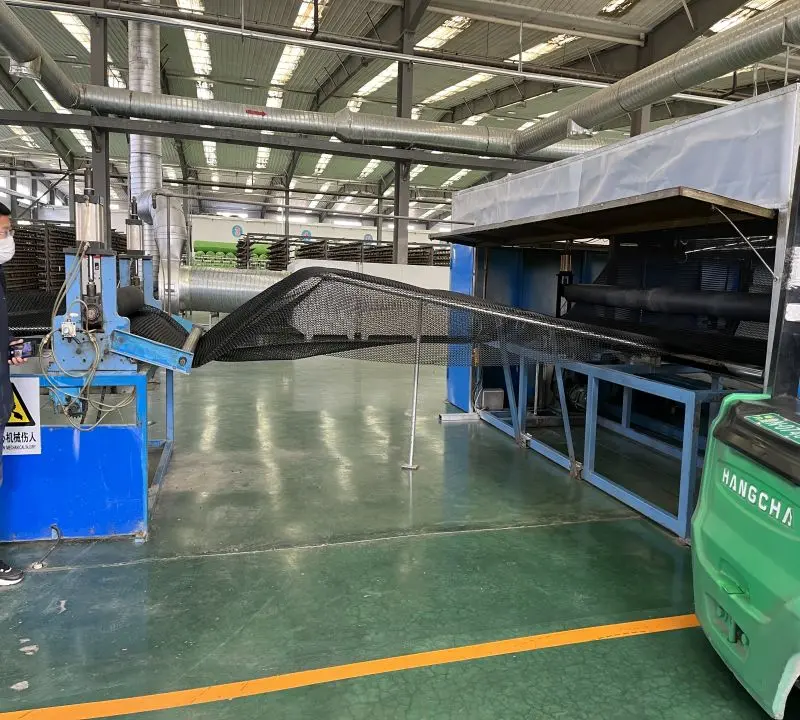
Company Advantages
Expertise and Innovation:
With over 15 years of experience and 35 patents, Haoyang leads the geosynthetics industry in R&D and product innovation.Certified Quality:
ISO 9001, ISO 14001, and OHSAS 18001 certifications ensure stringent quality control and environmental management.Comprehensive Solutions:
From material supply to engineering consulting, Haoyang provides end-to-end services tailored to customer needs.Global Reach:
Trusted by clients in over 60 countries, Haoyang has a proven track record in diverse international projects.Sustainable Practices:
Dedicated to environmental stewardship, our products and processes align with global sustainability standards.
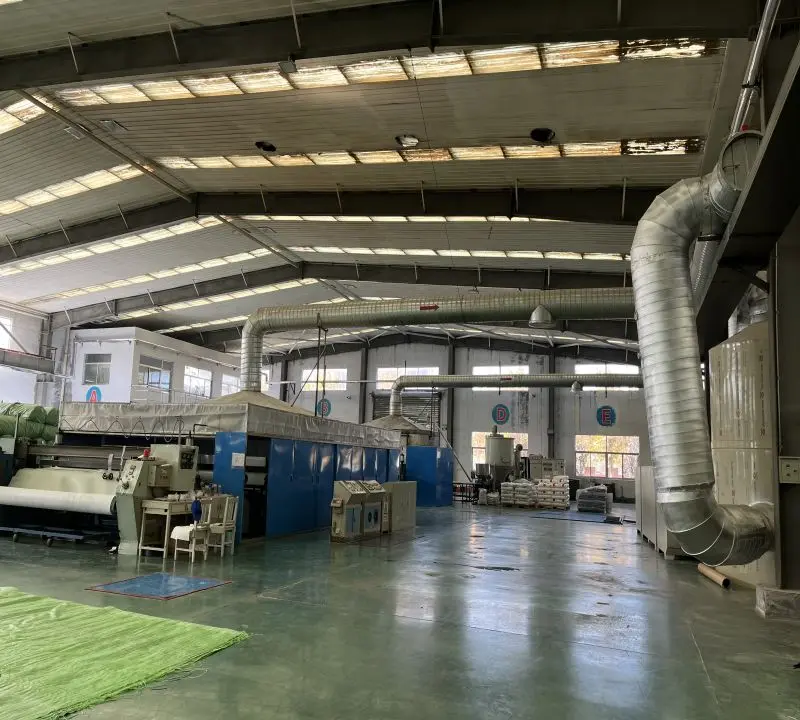
Choose Haoyang’s 3D Composite Drainage Net for a reliable, efficient, and sustainable solution to landfill and railway drainage challenges. Contact us today for a quote or consultation!
FAQ
1. What role does the three-dimensional composite drainage net play in landfill leachate management?
The 3D composite drainage net facilitates effective drainage in landfills by providing a stable three-dimensional structure, enhancing water flow, and preventing the accumulation of leachate. This aids in environmental protection and mitigates the risk of groundwater contamination.
2. How does the three-dimensional structure of the drainage net contribute to railway drainage applications?
The three-dimensional structure of the drainage net in railway applications promotes efficient water drainage, reducing the risk of waterlogging on railway tracks. It helps maintain the stability and integrity of the tracks, ensuring safe and reliable railway operations.
3. Question: What is the significance of the online thermal composite unit in the 3D composite drainage net manufacturing process?
The online thermal composite unit enhances the peel strength of the composite drainage net, ensuring a robust bond between the geotextile and the drainage core. This feature is crucial for maintaining the structural integrity and performance of the net in diverse environmental conditions.
4. Question: What are the specifications for the 3D composite drainage net in terms of thickness and width for landfill and railway applications?
The 3D composite drainage net can be produced with a net core thickness ranging from 5 to 8 mm and a maximum width of 3 meters. This versatility allows it to meet the specific requirements of both landfill leachate management and railway drainage systems.
5. Question: How does the advanced screw and rotating die contribute to the efficiency of the 3D composite drainage net production process?
The use of a new and efficient screw ensures uniform material plasticization and a high production yield. The novel rotating die stabilizes the three-dimensional structure of the net core, contributing to its stability and excellent drainage performance. Together, these features enhance the overall efficiency and quality of the production process.
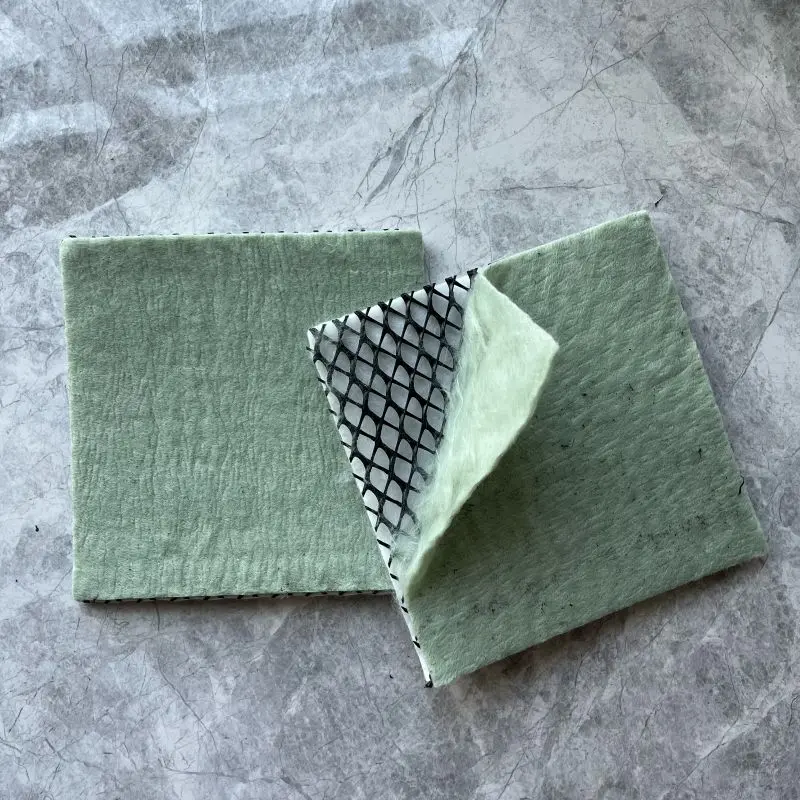
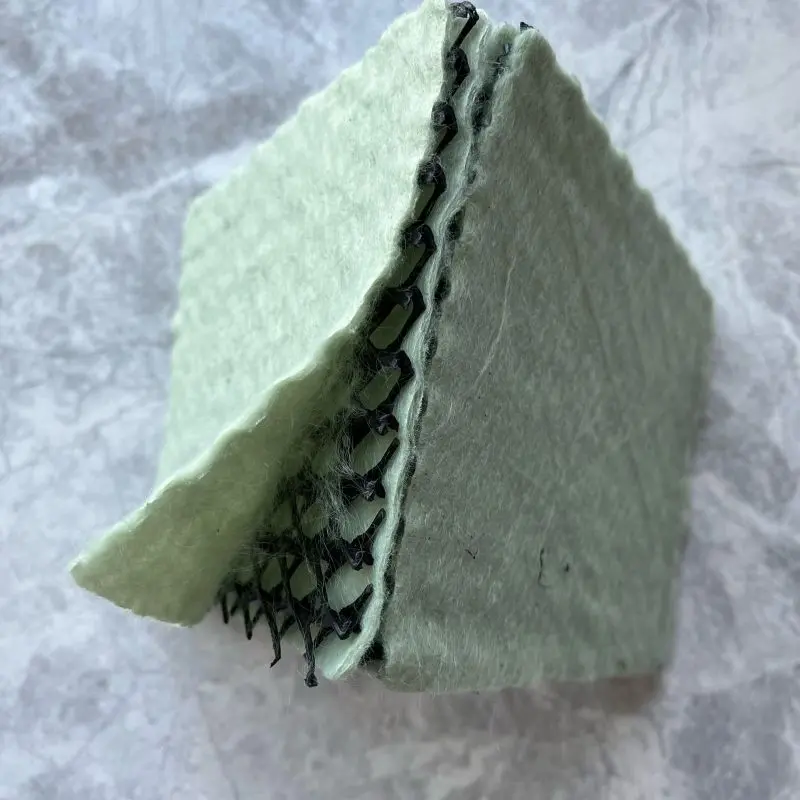
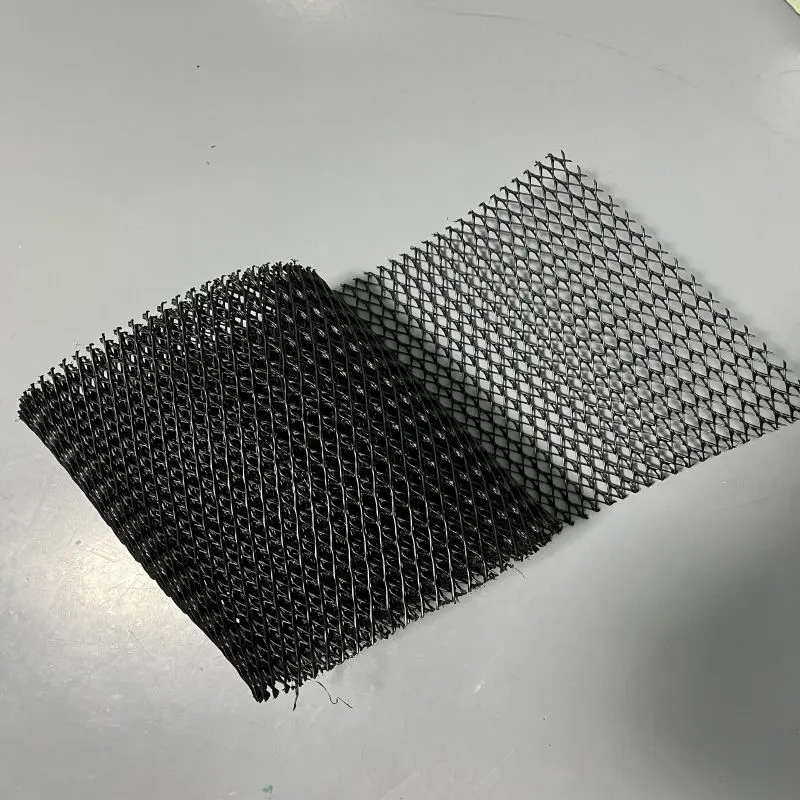
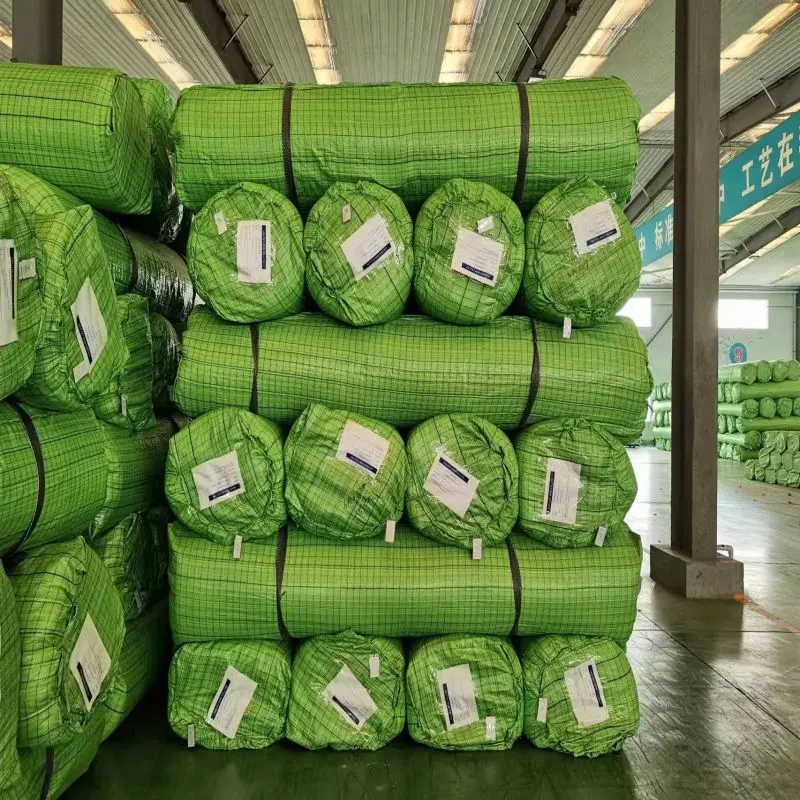
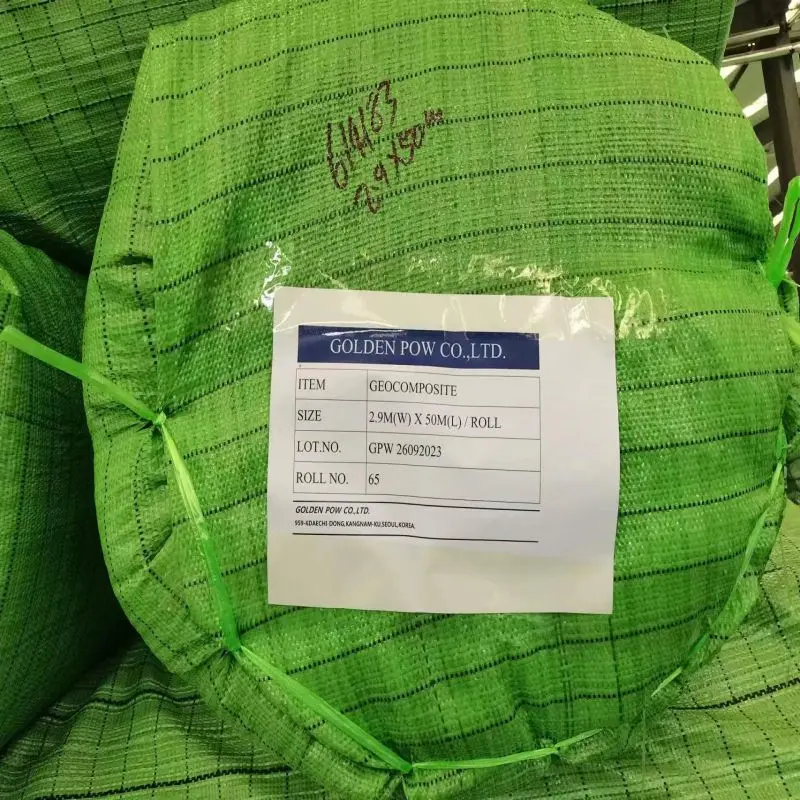
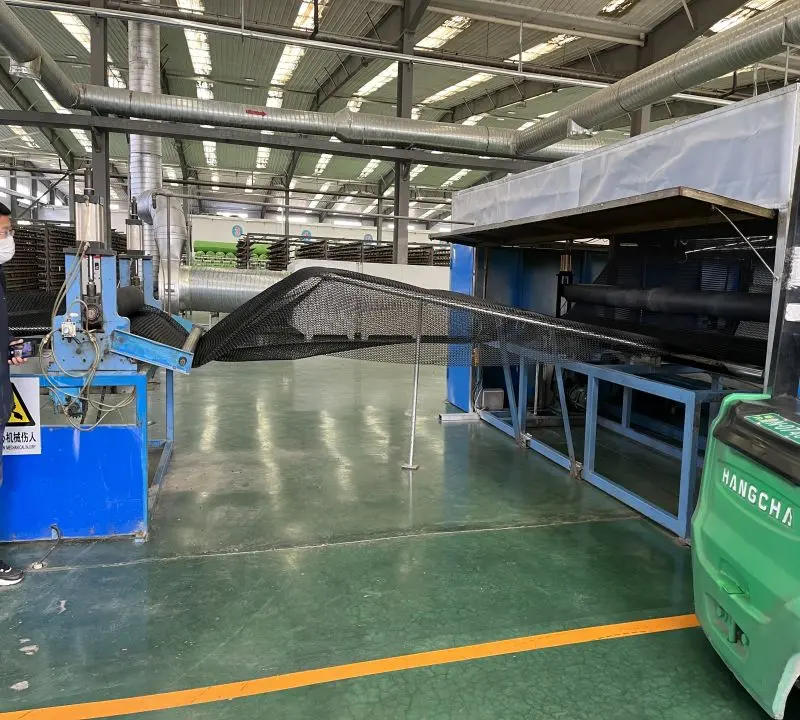
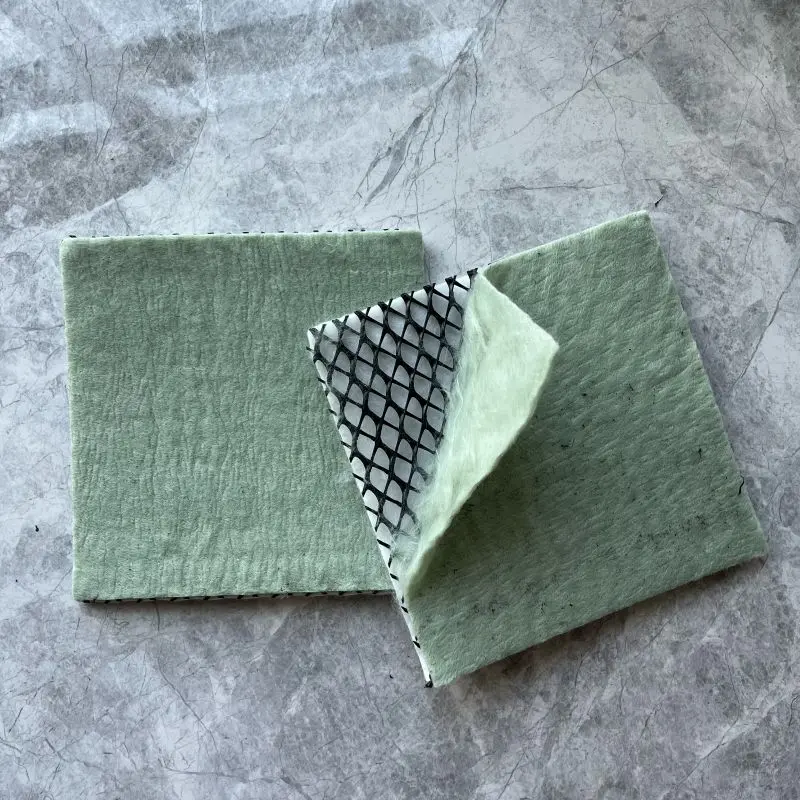
503.webp)
759.webp)
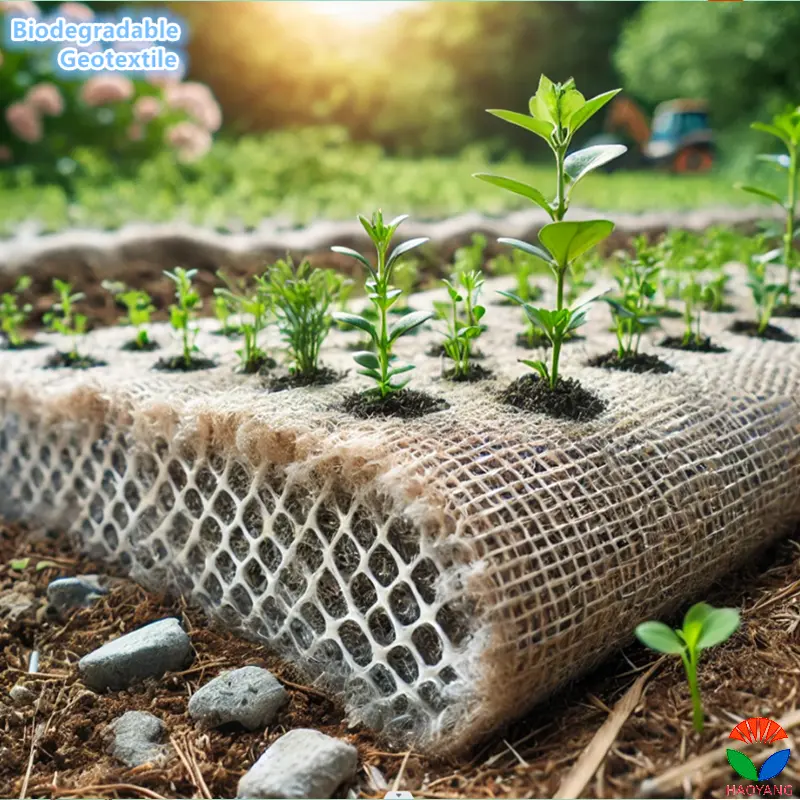
628.webp)
